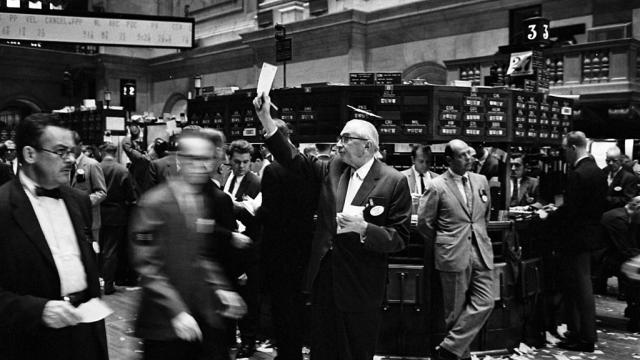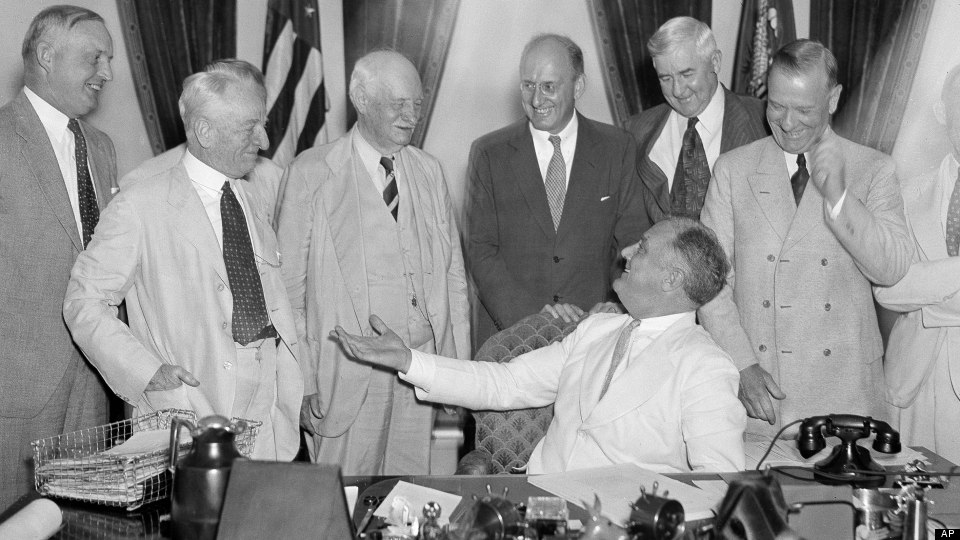
A bipartisan group of senators recently put forward a proposal for new Glass-Steagall legislation that would restore a strict separation between commercial banks and speculative trading. Anyone familiar with the ways of Washington knows that such legislation is badly needed. It is the only way to prevent the Wall Street gang from continuing to rip off the public and subjecting the rest of us to the risks of their speculation.
The idea of the original Glass Steagall was to create two completely distinct types of banks. On the one hand there would be the standard commercial banks with which most of us are familiar. These are the banks where people have checking and savings accounts and where they might go to take out a mortgage or small business loan.
Because of the central role that commercial banks play in the day-to-day workings of the economy, the government established the Federal Deposit Insurance Corporation (FDIC) to guarantee the vast majority of accounts in full. The goal was to let people know that their money is safe in the bank.
Since the government guaranteed the money, people need never worry about racing to the bank to get their money before the bank vault is empty. As a result we have not seen the sort of old-fashioned bank-runs that were a mainstay of the pre-FDIC era.
The quid pro quo for having the government guarantee deposits was that commercial banks were supposed to restrict their loans to a limited number of relatively safe activities, such as mortgage loans, small business loans, car loans and other simple and standardized forms of credit. These restrictions are essential, because if customers know their money is guaranteed by the government, they won’t care if their bank is taking enormous risks. The government must act to impose discipline on bank behavior that will not come from the market when deposits are insured.
By contrast, investment banks were set free to engage in whatever risky behavior they liked. Investment banks did not take deposits but rather raised money through issuing bonds or other forms of borrowing. In principle, their potential failure did not pose the same risk to the economy.
The ending of Glass-Steagall removed the separation between investment banks and commercial banks, raising the possibility that banks would make risky investments with government-guaranteed deposits. In principle, even after the ending of Glass Steagall banks were supposed to keep a strict separation between their commercial banking and the risky bets taken by their investment banking divisions, but this depends on the ability of regulators to enforce this restriction.
The Volcker Rule provision in Dodd-Frank was an effort to re-establish a Glass Steagall type separation but the industry is making Swiss cheese out of this regulation in the rule-writing process. Serious people cannot believe that this will keep the Wall Street banks from using their government-guaranteed deposits as a cushion to support their speculative game playing.
If anyone questions how this story is likely to play out in practice, we need only go back a few years to the financial crisis of 2008 to 2009. At that time, most of the major banks, Bank of America, Citigroup, Goldman Sachs and Morgan Stanley, almost surely would have failed without government support.
In fact, some of the top economic advisers in the Obama administration wanted to let them fail and have the government take them over, as the FDIC does all the time with insolvent banks. However Larry Summers managed to carry the day by arguing that such a move would be far too risky at a time when the financial markets were so unsettled. As a result, the big banks got their government money and were allowed to consolidate so that they are now bigger than ever.
This was primarily a problem of banks that are too big and too interconnected to fail, not just a problem of commercial banks merging with investment banks. But these mergers certainly help banks to reach too-big-to-fail status.
Some may argue that the crisis of 2008-2009 involved extraordinary circumstances. However when banks fail it is generally because the economy faces a crisis. They do not typically fail in good times. And it is a safe bet that there will always be a smart and belligerent Larry Summers on the scene aggressively arguing the case against anyone who wants to subject the banks to market discipline.
What is striking about the argument on re-instating Glass-Steagall is that there really is no downside. The banks argue that it will be inconvenient to separate their divisions, but companies sell off divisions all the time.
They also argue that foreign banks are not generally required to adhere to this sort of separation. This is in part true, but irrelevant.
Stronger regulations might lead us to do more business with foreign-owned banks since weaker regulations could give them some competitive edge. That should bother us as much as it does that we buy clothes and toys from Bangladesh and China.
If foreign governments want to subject themselves and their economies to greater risk as a result of bad financial regulation, that is not an argument for us to do the same. Are we anxious to be the next Iceland or Cyprus?
In short, the senators are on the right track pushing for a new Glass-Steagall. The public should hope that bankers’ lobby doesn’t derail their efforts.
Originally published by Campaign for America's Future
3 WAYS TO SHOW YOUR SUPPORT
- Log in to post comments













